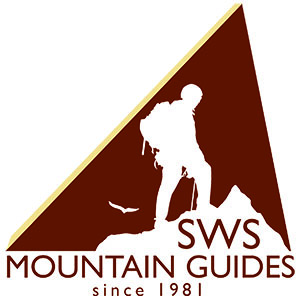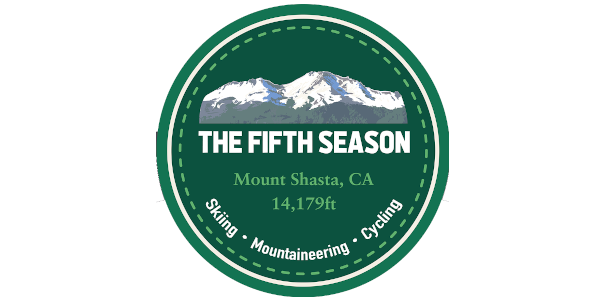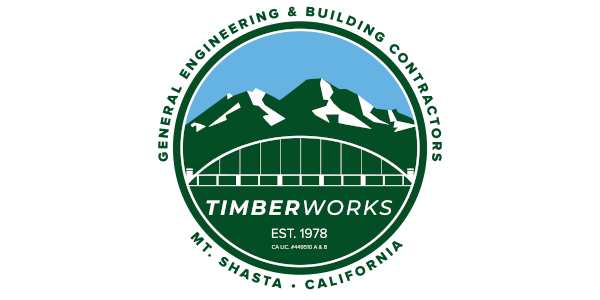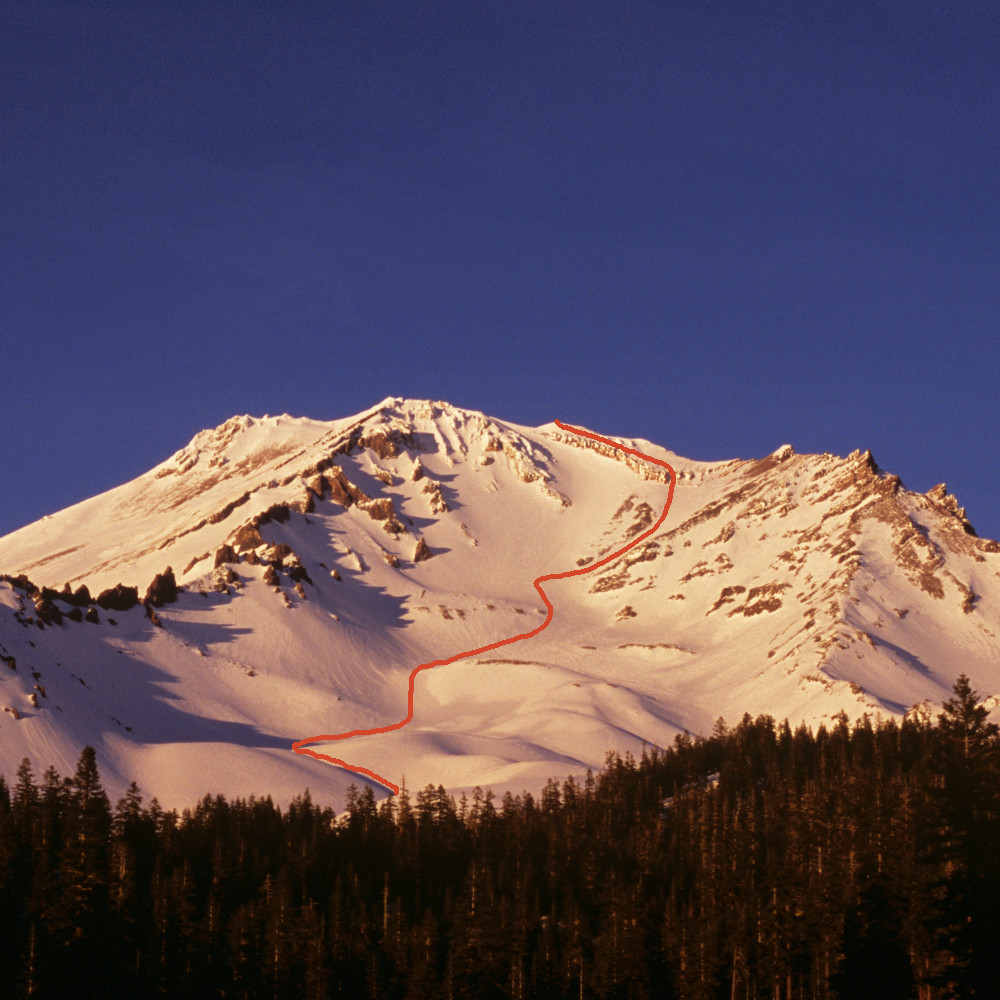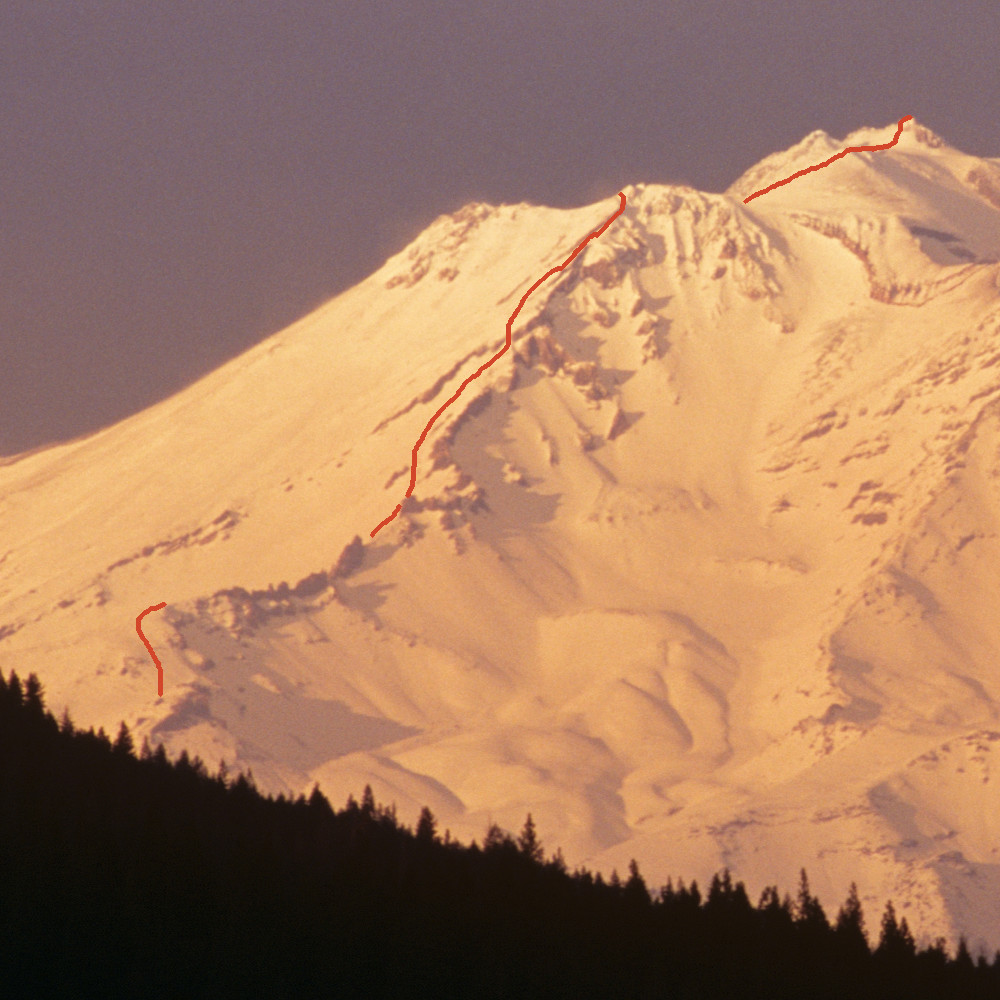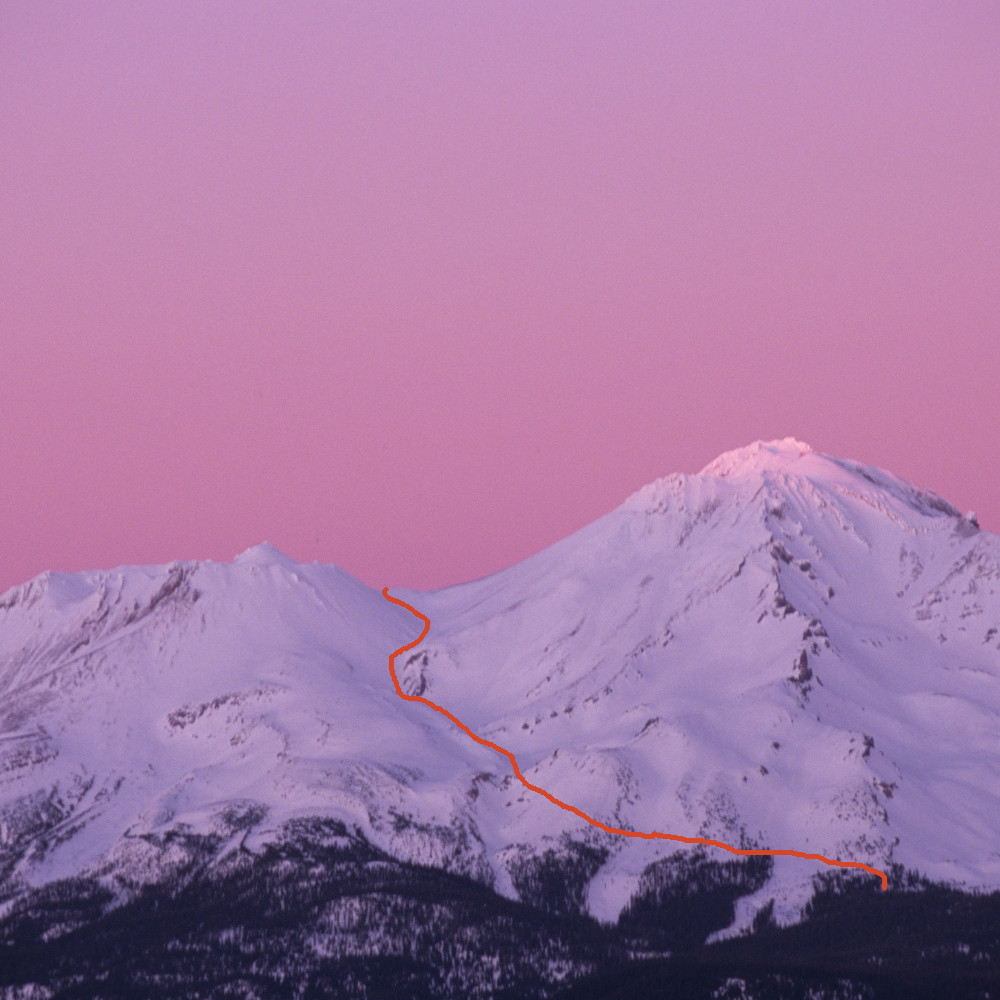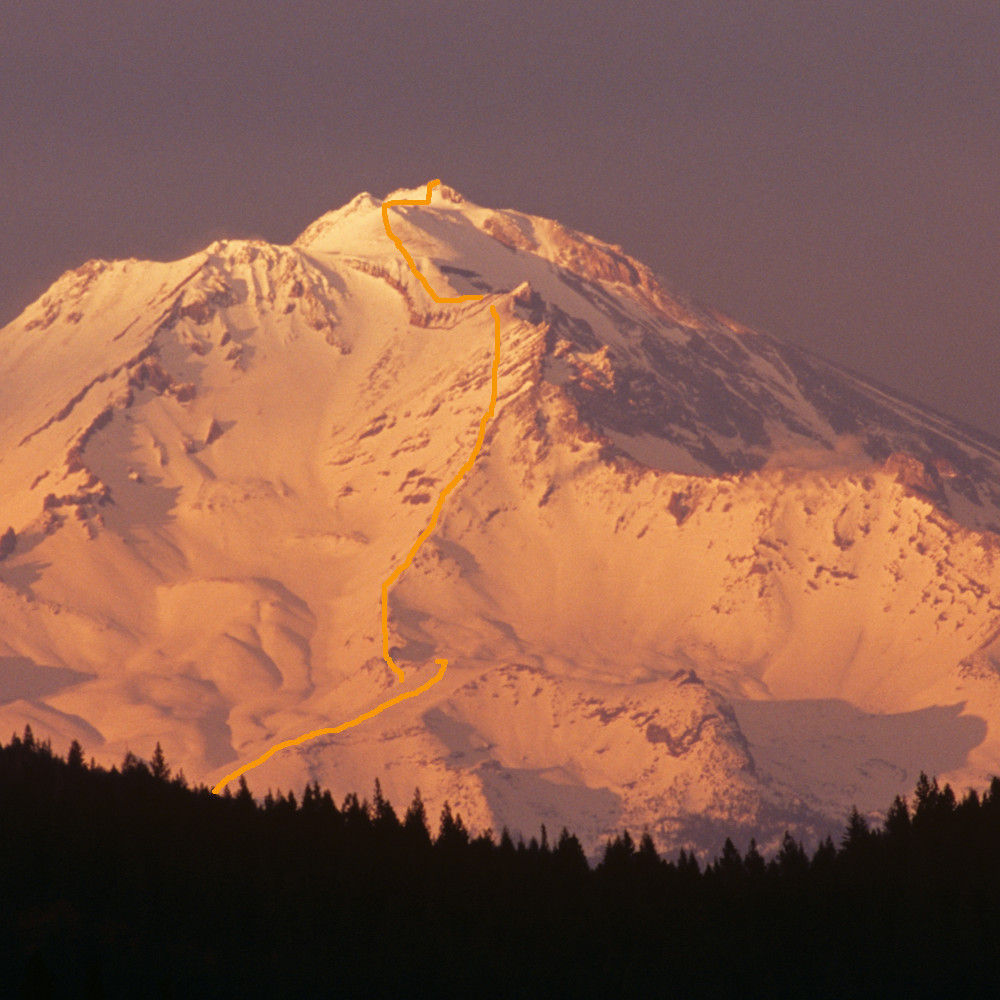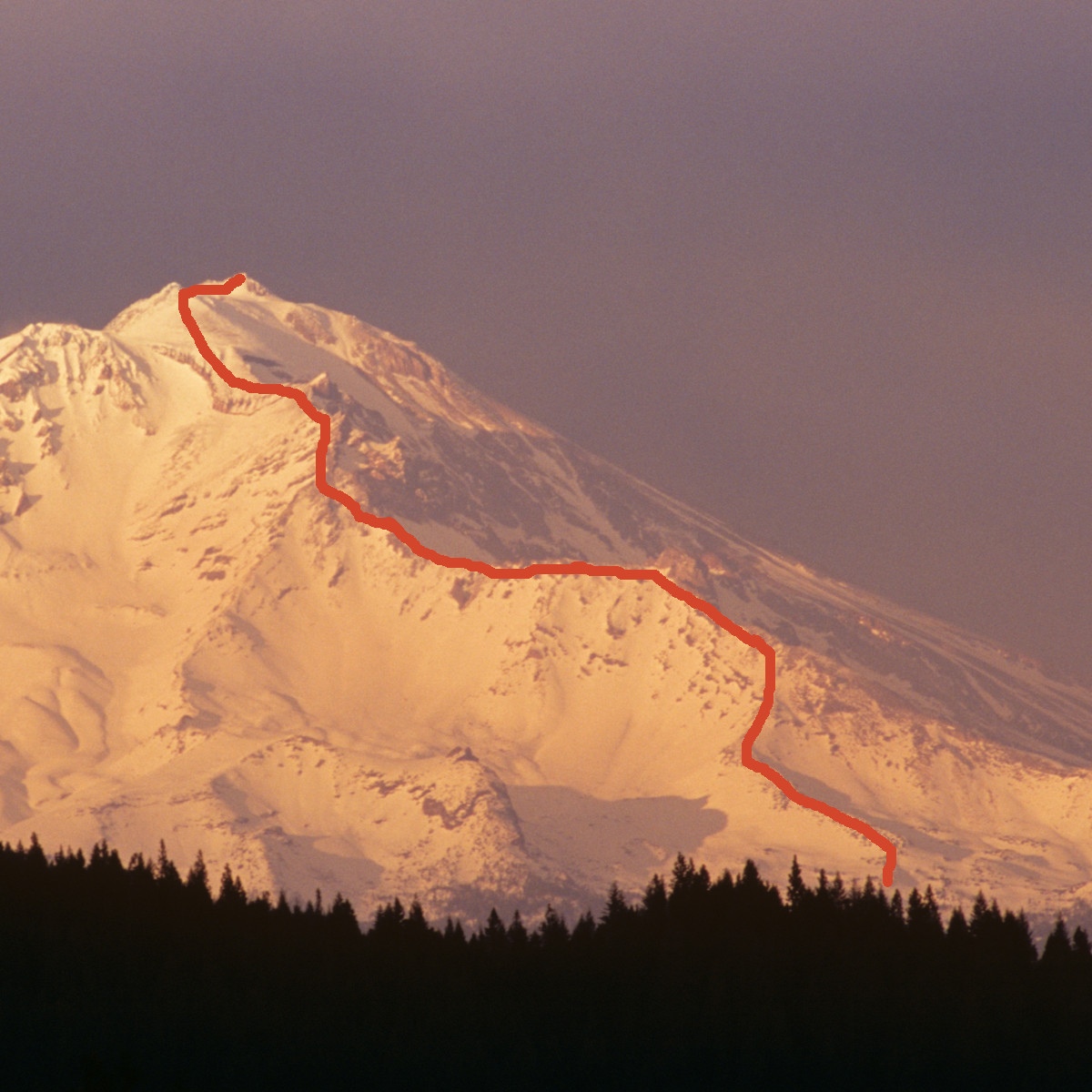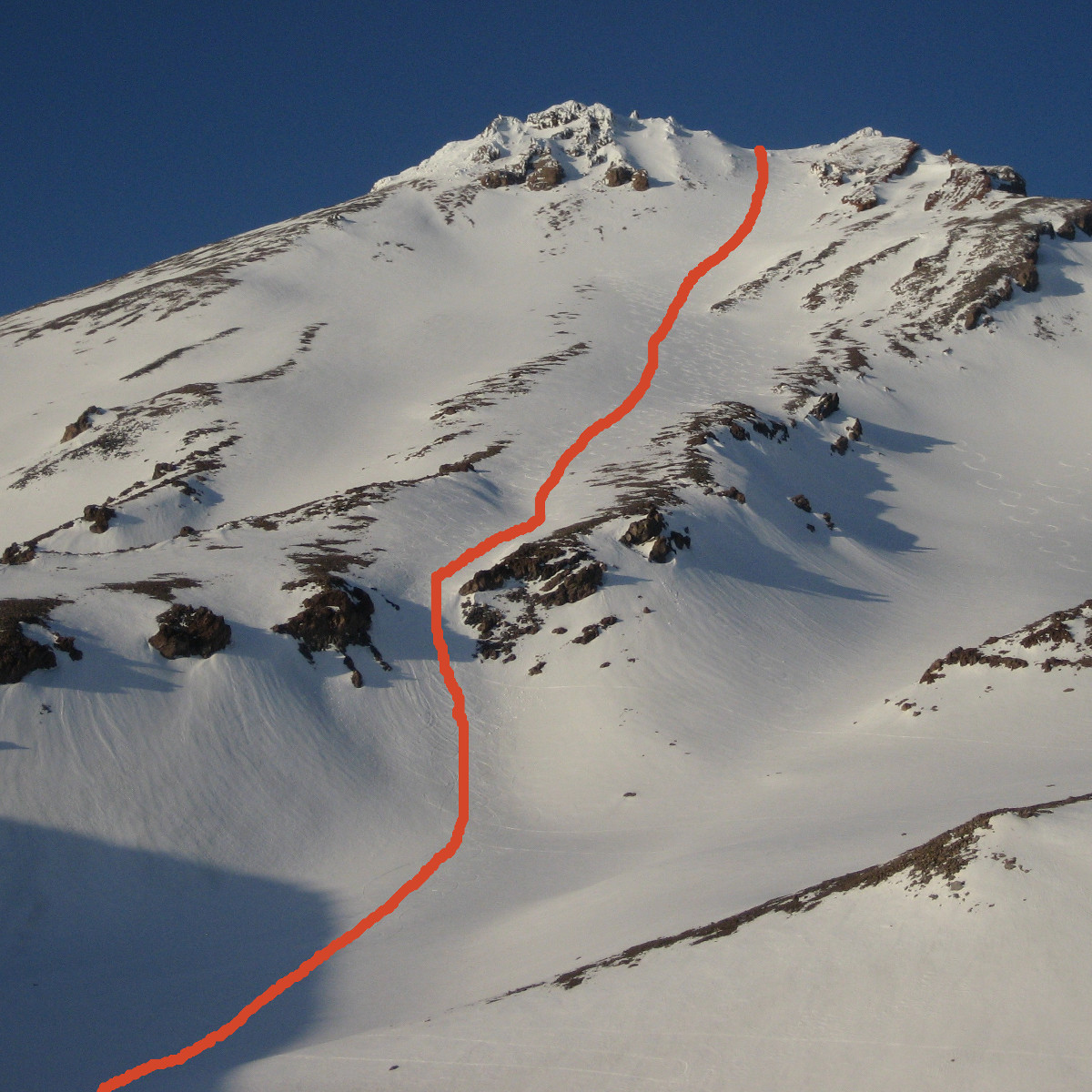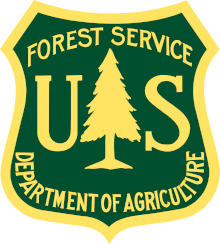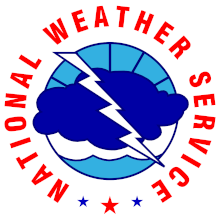You are here
Climbing Routes
Southwest Side Routes
Avalanche Gulch
The classic and most popular climbing route up Mount Shasta and John Muir's favorite. It follows a 7,000 vertical foot ascent that exposes the climber to steep snow and ice, rock fall, and weather extremes. The best time to climb is usually April through June and sometimes July, rarely August through November.
Casaval Ridge
Casaval Ridge is the obvious classic line that bisects Mt. Shasta’s mass, separating the West Face from Avalanche Gulch. Casaval is a moderate climb with big risk potential in the form of exposure to long falls. The ridge’s serrated spine rises from 8,000 feet behind Horse Camp to just over 13,300 feet at its upper terminus at the base of Misery Hill. This fun, rewarding, and beautiful route is best done early to mid-season with ample snow coverage.
Green Butte Ridge
The lower portion of this route is the most traveled winter line on the mountain. Called “Broadway”, the area just above tree line is commonly frequented by tele, randonee, and boarders for its safe ascent/descent during winter storms. Once above tree line, it’s a straight forward line along the broad ridge leading to Green Butte. This section is an exercise in wind survival during storms. Mid and late season this route is void of snow, and is not recommended.
Sargents Ridge
You have to imagine this route in the days when the snow was plowed to its lower ramparts in the Old Ski Bowl. In early season you’ll need to skin/trek the three miles of unplowed road from Bunny Flat to the Old Ski Bowl (OSB) or perhaps you may get lucky and be able to hitch a ride with a snowmobiler. Mid to late season this route loses its snow cover and is not recommended.
West Face
The West Face offers a similarly difficult alternative to Avalanche Gulch with less traffic. If you have two full days, and reasonable conditioning, it is a great option. The best time for this route is early to mid-season. The more snow the better.
North Side Routes
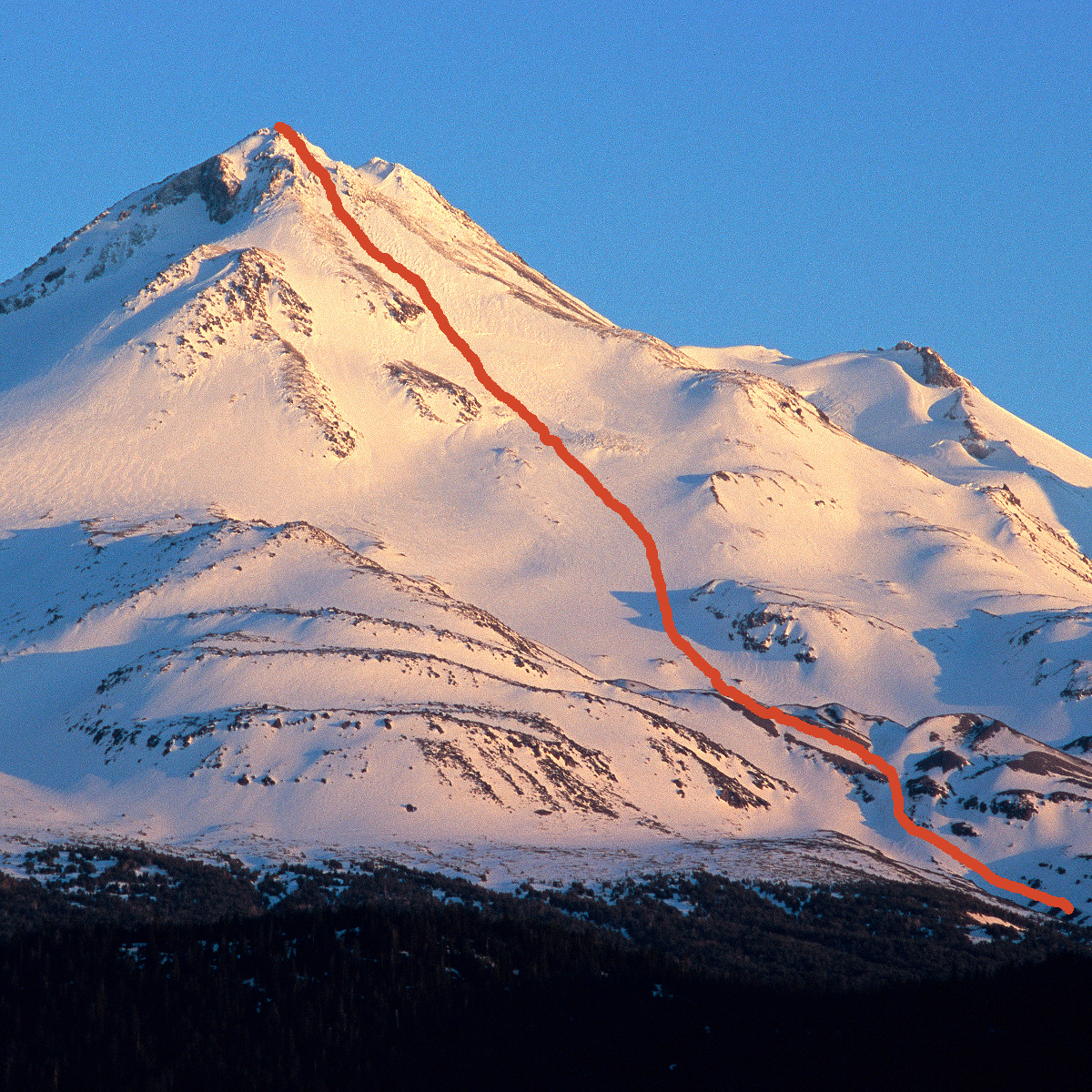
Bolam Glacier
The Bolam Glacier route is an appropriate first glacier ascent for the aspiring alpinist. The relatively simple route allows the climber to concentrate on technique and the spectacular view rather than sweating complex navigation through crevasses and seracs. It offers great, natural lines that skirt around the glacier's two main bergschrunds.
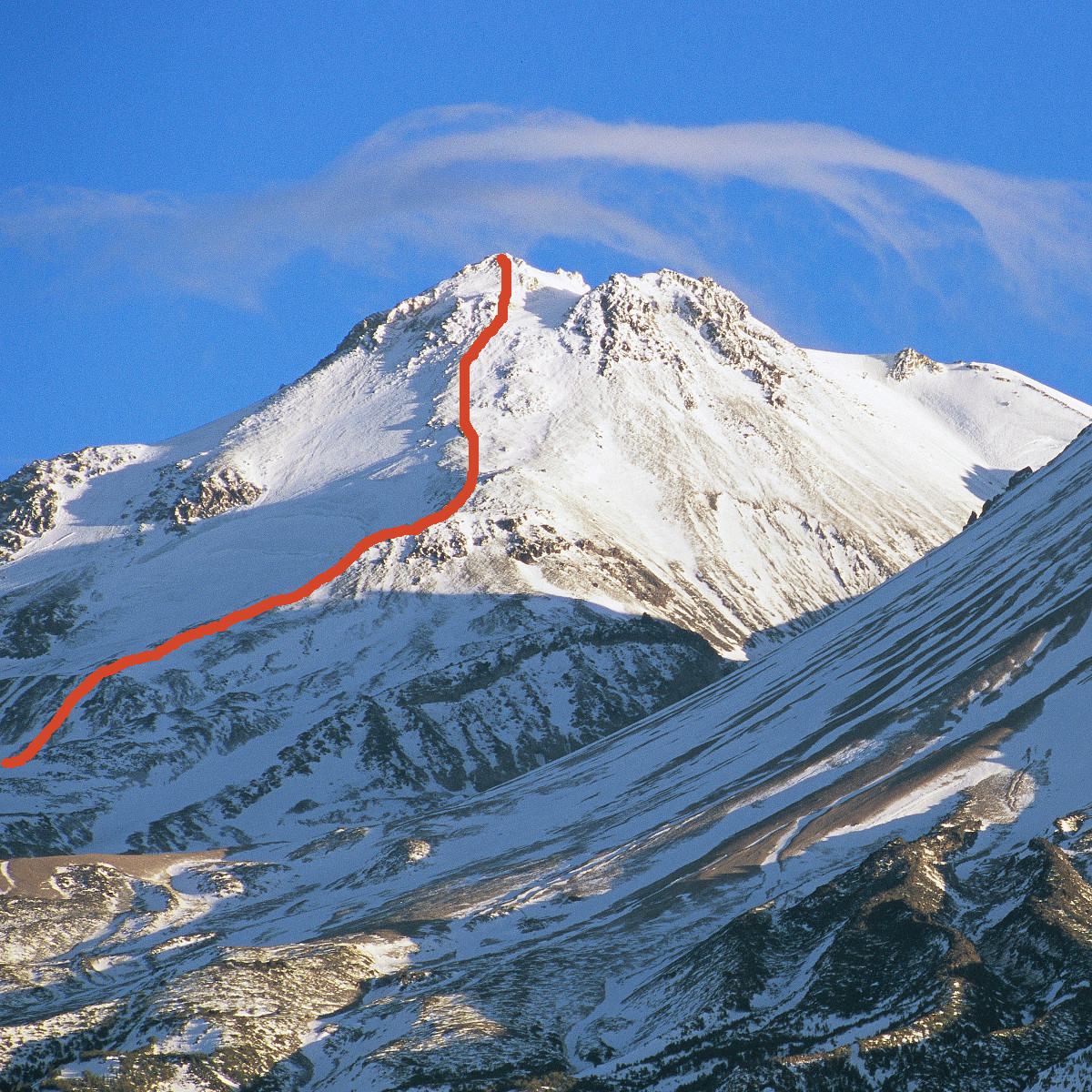
Bolam/Whitney Ridge
Here is your chance to do what few have done! It is an odd variation that comes into good climbing condition quickly, and out of condition just as fast.
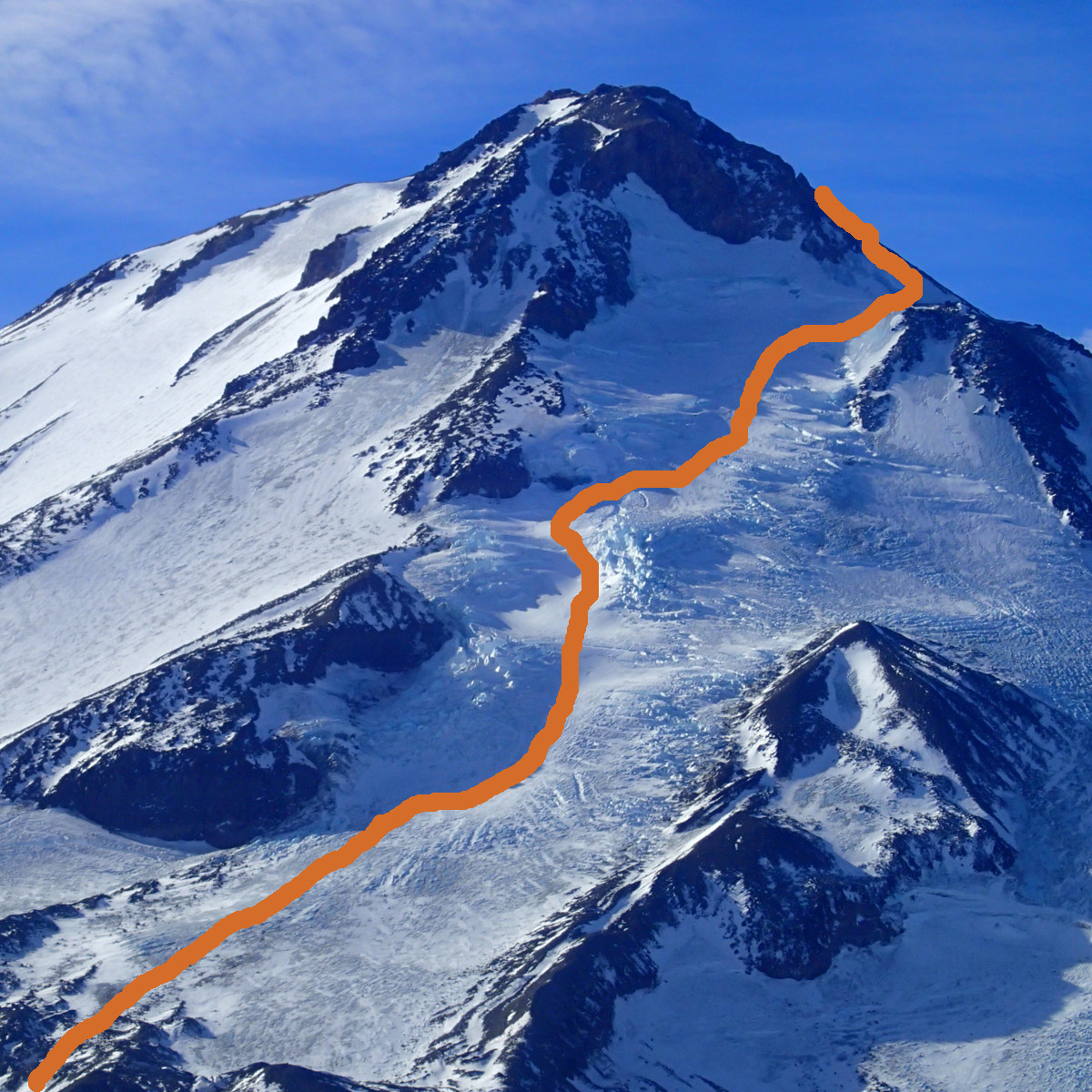
Hotlum Glacier
This route is Mount Shasta’s best playground. The Hotlum offers endless opportunities in a compact package. This route is best accessed via the Brewer Creek trail head which can be limited in the early season by winter snow pack that may not melt until late June or early July. Most of the summer it is a delight to explore, offering a true wilderness experience with few if any other visitors.
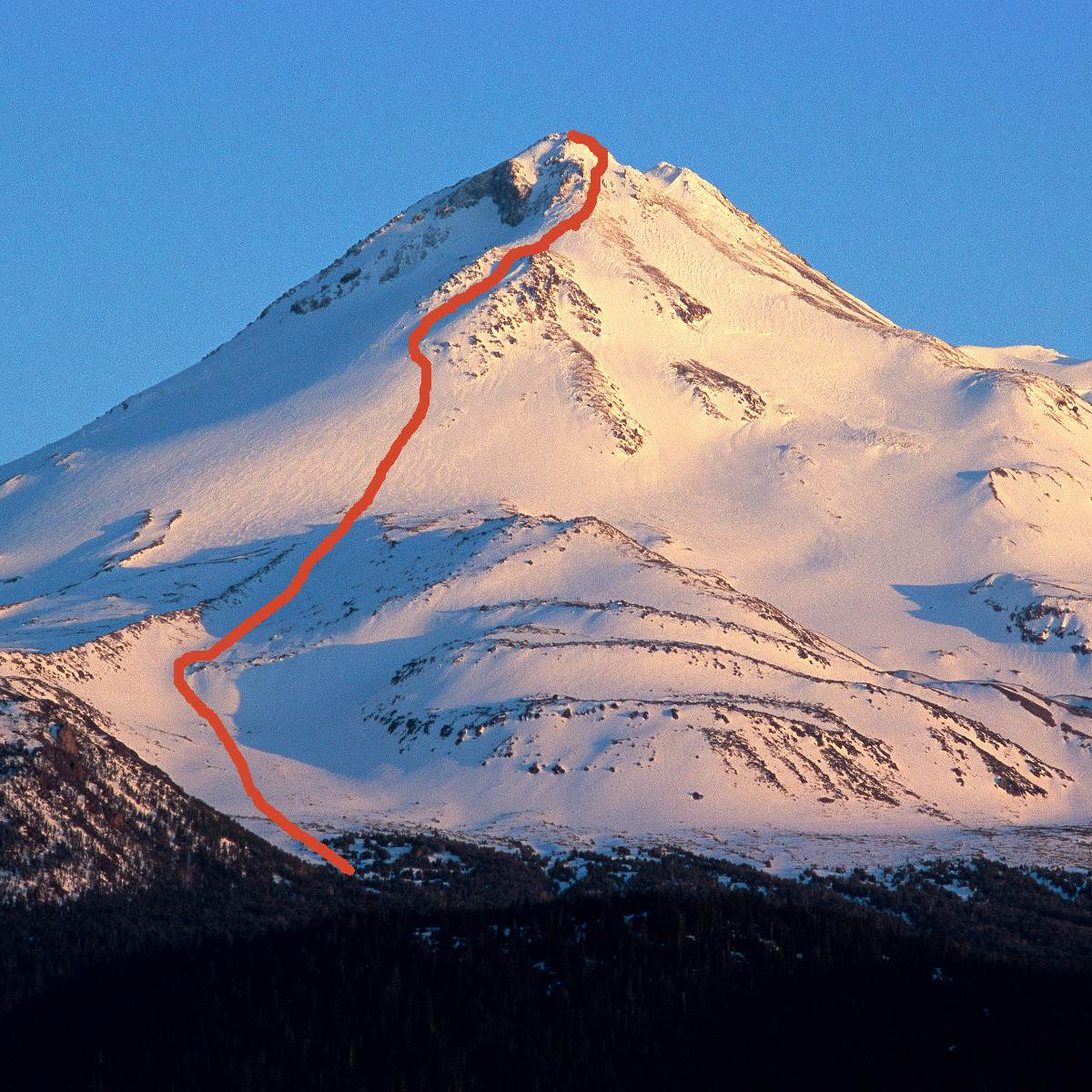
Hotlum/Bolam Ridge
This is a spectacular route with stellar views of the Hotlum and Bolam glaciers, as well as the Shasta Valley reaching up to Oregon. Options for experienced climbers are abundant. Late season conditions can be icy. This route is best done in two to three days.
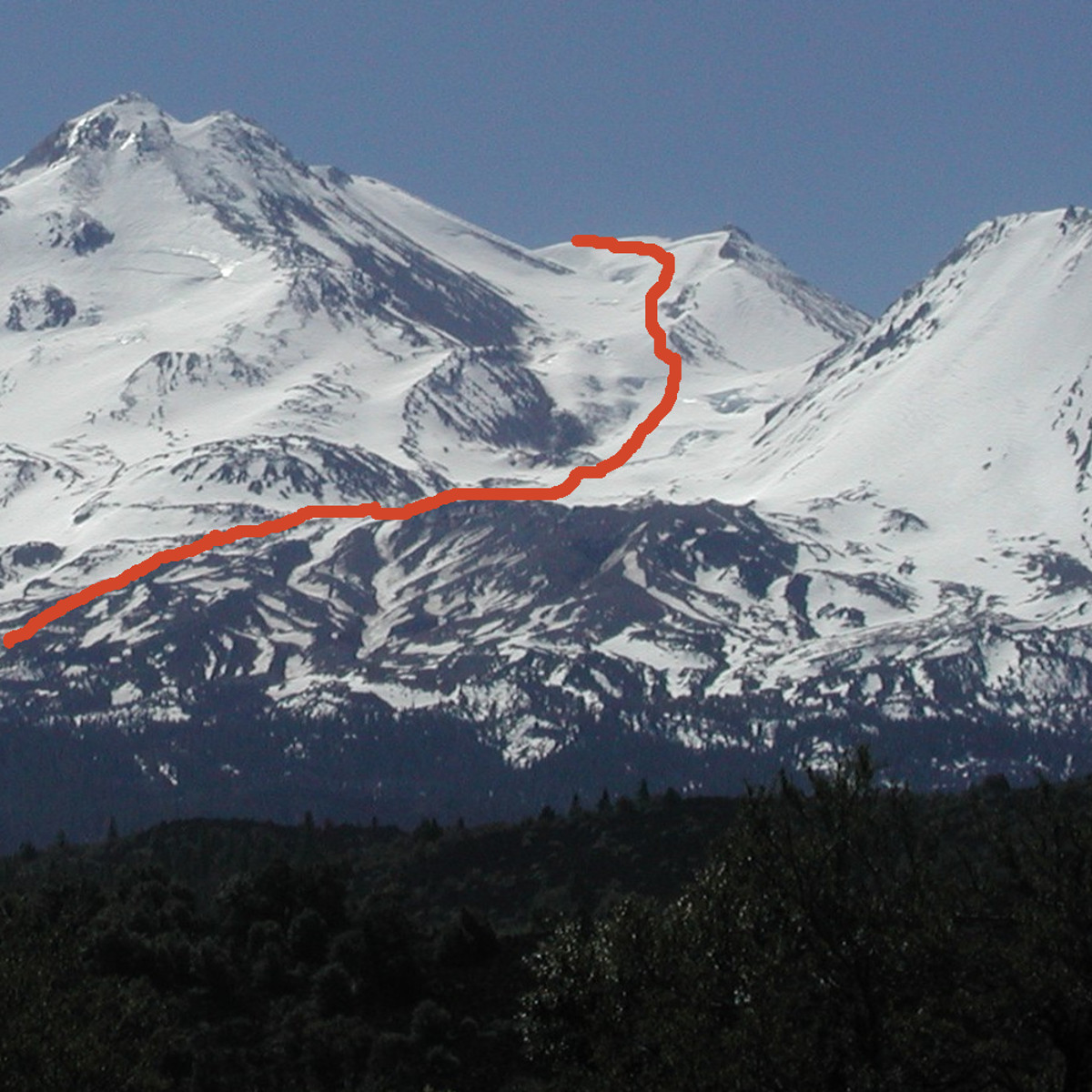
Whitney Glacier
The Whitney Glacier is the longest glacier in California offering plenty of fun challenges. The Whitney Glacier conditions vary widely with the winter season’s snow pack and time of year. The later season conditions can be tough with increased rock fall hazard, but most mid-summer climbs are great.
East Side Routes
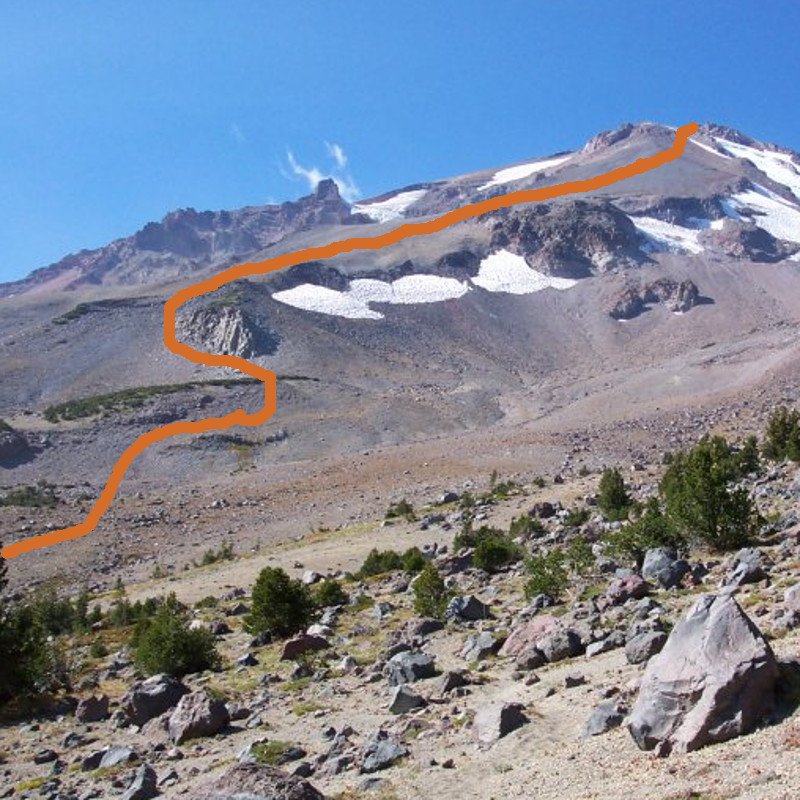
Clear Creek
The Clear Creek route is Mount Shasta’s easiest route to the top. That being said, “Casual day syndrome” can lead one off course and into steeper, glaciated, and/or rock fall prone terrain. The climb starts at the Clear Creek trail head beneath towering old growth Red Fir. The hike gains elevation along the ridge above the cavernous Mud Creek Canyon. Some fault the route for its loose ash, scree and gravel surface during the summer and fall. We consider it reason to take your time, and to enjoy the scenery and geology
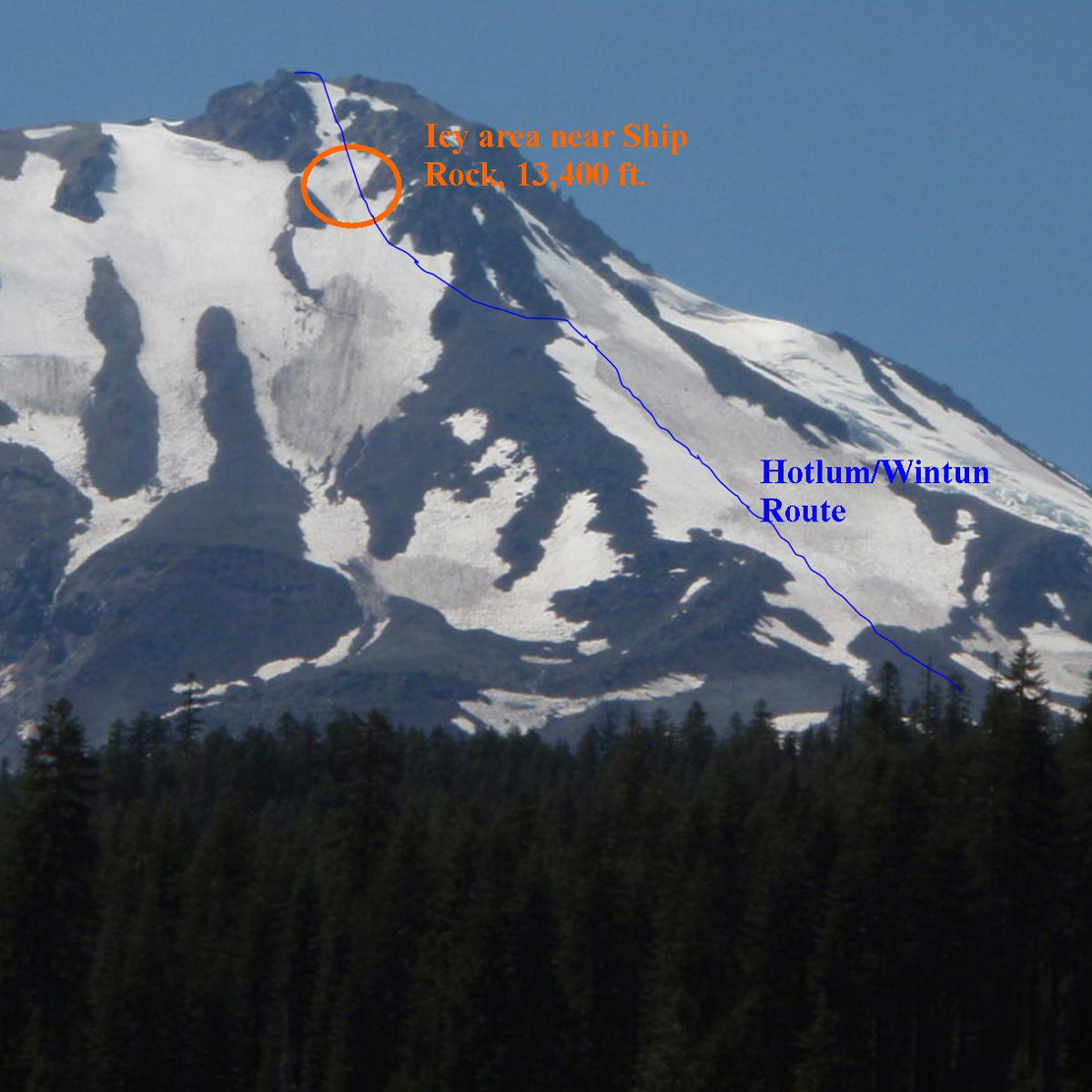
Hotlum/Wintun Snowfield
This route is one of the most sought after ski/board descents on Mt. Shasta, as well as an excellent climbing endeavor. Often referred to as the “Hotoon," it is a permanent snowfield between the Hotlum and Wintun glaciers. No crevasses are encountered along the route's length, as long as one does not stray out onto the Hotlum Glacier. It is sometimes called a ridge, though don't expect much of a ridge.
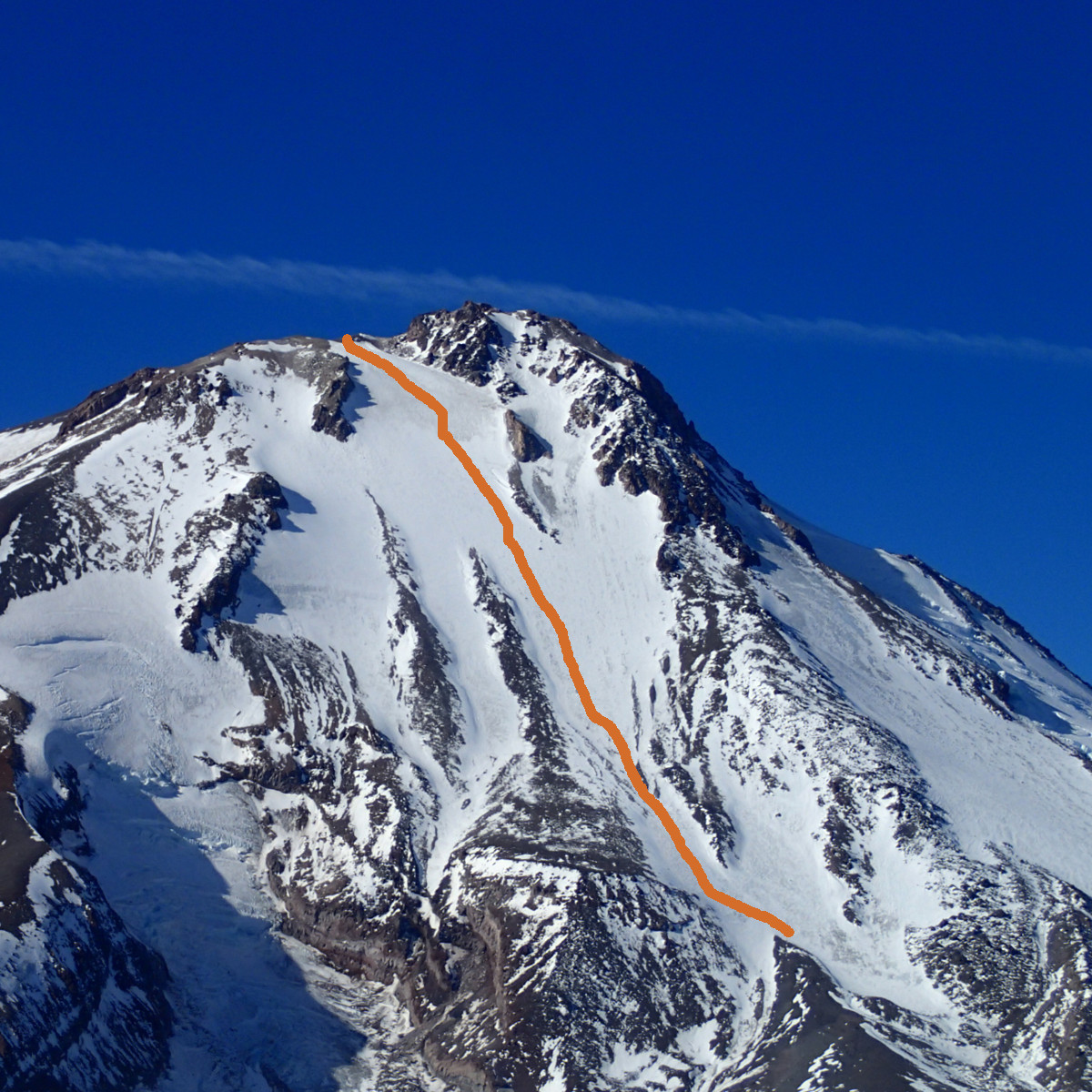
Wintun Glacier
Most climbers only experience the north corner of the Wintun snowfield, above the glacier proper, while on the Hotlum/Wintun route. The Wintun Glacier has a lot more to offer the experienced mountaineer.
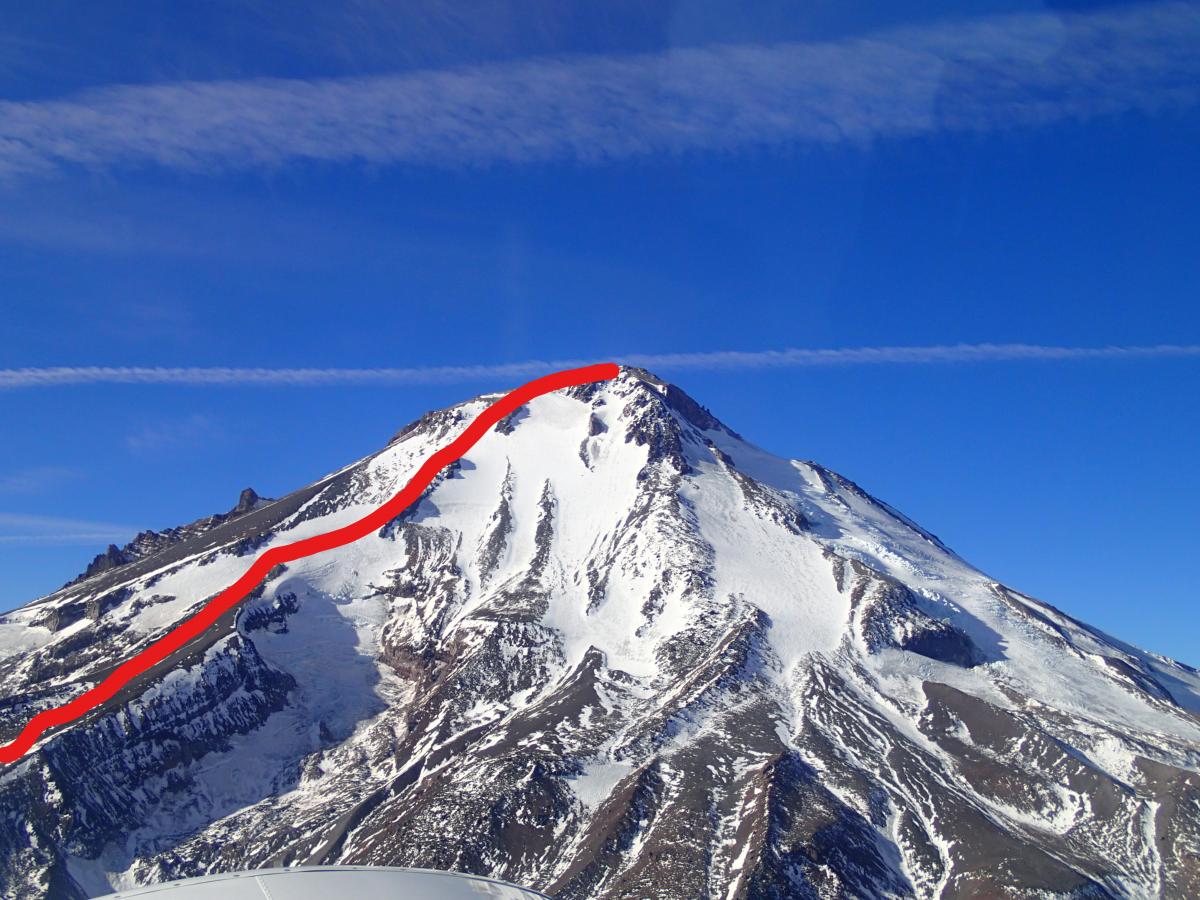
Wintun Ridge
Considered a variation of the Clear Creek route, the Wintun Ridge offers some interesting options. From the ridge you can traverse out onto the Wintun Glacier and add challenges if desired.














